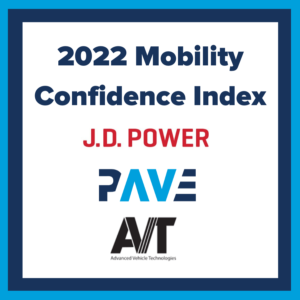J.D. Power Study on Fully Automated Self-Driving Vehicles: Consumers Don’t Know What They Don’t Know
Mobility Confidence Index Study in collaboration with MIT Advanced Vehicle Technology Consortium and Partners for Automated Vehicle Education (PAVE)
TROY, Mich.: 30 Nov. 2021 — While the automotive industry continues to move toward fully automated, self-driving vehicles, the pace is not being matched by educational efforts that will help bring buyers into the modern mobility movement. According to the redesigned J.D. Power 2021 Mobility Confidence Index (MCI) Study,SM released today, consumers possess inaccurate knowledge of fully automated self-driving vehicles.
Survey respondents were asked to select one of seven possible descriptions to define fully automated self-driving vehicles. Based on SAE International’s definition of Level 4 and Level 5 self-driving, two descriptions correctly defined a fully automated self-driving vehicle, which only 37% of MCI respondents selected. More than half (55%) of respondents selected descriptions that are aligned with driver assist technology, which describe lower levels of automation currently available in many product offerings.
The ability to accurately define a fully automated, self-driving vehicle is even lower (32%) among those with higher self-reported levels of automated vehicle (AV) knowledge. Survey findings show those who self-report knowing nothing at all about AVs are actually more accurate (37%) in defining fully automated self-driving vehicles.
“This is a ‘Danger, Will Robinson’ moment for the fully automated self-driving vehicle industry,” said Lisa Boor, senior manager of global automotive at J.D. Power. “There is a significant gap between actual and perceived AV knowledge. Right now, consumers don’t know what they don’t know. Clear, consistent messaging from industry stakeholders is needed to improve the accuracy of consumer AV knowledge. The industry needs to be the catalyst for educating the public before running into such speed bumps. AV education must expand beyond current, traditional learning methods.”
The study index is based on six unique attributes of consumer comfort with fully automated, self-driving vehicles. The comprehensive metric measures consumer readiness for AV technology in several categories: personal vehicles; commercial vehicles; public transit; riding if unable to drive due to age or injury; sharing the road with other AVs; and consumer purchase intent.
This year, the study has been redesigned as an annual offering from J.D. Power, MIT Advanced Vehicle Technology Consortium (MIT AVT) and Partners for Automated Vehicle Education (PAVE). By merging the quarterly J.D. Power MCI Study with the annual MIT AVT Automated Driving Technologies Study, key metrics from both are maintained with a freshening of phrasing and survey terminology. The redesign also provides the opportunity to add several new topics not previously covered. The study is further strengthened by the participation and support of the PAVE coalition and its goal of raising public understanding of driverless vehicle technology.
Following are key findings from the 2021 study:
- Knowledge not the same as learning: Consumer interest in AVs increases 10 percentage points from the J.D. Power 2020 Q3 MCI Study, with 51% now having more general interest due to something they read or heard. However, only 29% of respondents have actively sought to find information about AVs. The majority (53%) of respondents believe the best way to learn about AVs is a driver’s education course for self-driving vehicles. A majority (58%) also say they are willing to complete specialized training for a special AV driver’s license. At the opposite end of the learning spectrum, 27% say they would prefer to learn by doing in a self-taught fashion. “These results demonstrate the power of knowledge,” said Tara Andringa, executive director of PAVE. “The more people see and learn, the more they want to know. And we can help to quench that thirst for learning by providing clear, hype-free facts and simple, consistent terminology.”
- Today’s experiences build tomorrow’s customers and expectations: Leading the way for greater self-driving vehicle expectations and consumer acceptance are experiences with current Advanced Driver Assistance Systems (ADAS). Today, 41% of respondents are comfortable with driver assist technology being the maximum level of automation, which is 27 percentage points higher than those who would be comfortable with fully automated self-driving vehicles. Adding to the challenge is that 19% of respondents believe that fully automated self-driving vehicles are available for purchase or lease today—an incorrect belief that is also shared by 16% of Tesla owners. “Tesla” was the most frequently mentioned word when respondents were asked what comes to mind when saying fully automated self-driving vehicles are available today.
- Consumer self-driving vehicle readiness rises: The score for confidence in fully automated self-driving vehicles improves to 42 (on a 100-point scale) from 34 a year ago and 36 two years ago. Positively trending is the excitement to use fully automated self-driving services when compared with the J.D. Power 2020 Q3 MCI Study: personal vehicles (+11 percentage points); delivery services (+3); taxi/ride-hailing services (+4); and public transit (+2). Nearly one-third (31%) of respondents say they are very comfortable or extremely comfortable with transporting goods in a fully automated, self-driving vehicle, and the comfort level increases to 47% among those with an active driving assistance feature on their current vehicle. Respondents also see the benefit in fully automated self-driving vehicles for those unable to drive due to age or injury—a newly added index attribute for this year’s study—as respondents’ comfort levels are 27% overall and 45% among those with active driving assistance on their current vehicle.
- Consumer comfort is higher for AV applications that may not involve them: Of all fully automated self-driving modalities measured, consumers are most comfortable with goods being transported commercially and riding in a fully automated self-driving vehicle if unable to drive due to age or injury. The attributes that are more likely to affect a consumer personally—AV public transit and riding in fully automated self-driving vehicles—have the lowest levels of comfort.
“Safety is paramount when building any self-driving experience,” said Bryan Reimer, Ph.D., research scientist in the MIT AgeLab and associate director of The New England University Transportation Center at MIT. “Organizations working as technology pioneers have the responsibility to create realistic and accurate consumer expectations for what their products can and cannot do. Small setbacks in public trust triggered by misuse of systems or a failure of a system to perform based upon misconceived consumer expectations may hamper deployments over the coming decades, depriving consumers of the convenience and safety benefits the technology can potentially offer. Consumer overconfidence and lack of knowledge to date can lead to risk taking that will cause the AV industry to hit a lot of potholes.”
The J.D. Power 2021 Mobility Confidence Index (MCI) Study is based on responses from 4,000 vehicle owners in the United States age 18 and older who completed a 15-minute online survey. The study results were balanced to basic census demographics to be nationally representative. The study was fielded in June-July 2021.
See the online press release at http://www.jdpower.com/pr-id/2021166.
About J.D. Power
J.D. Power is a global leader in consumer insights, advisory services and data and analytics. A pioneer in the use of big data, artificial intelligence (AI) and algorithmic modeling capabilities to understand consumer behavior, J.D. Power has been delivering incisive industry intelligence on customer interactions with brands and products for more than 50 years. The world’s leading businesses across major industries rely on J.D. Power to guide their customer-facing strategies.
J.D. Power has offices in North America, Europe and Asia Pacific. To learn more about the company’s business offerings, visit JDPower.com/business. The J.D. Power auto shopping tool can be found at JDPower.com.
Media Relations Contacts
Shane Smith; East Coast; 424-903-3665; ssmith@pacificcommunicationsgroup.com
Geno Effler, J.D. Power; West Coast; 714-621-6224; media.relations@jdpa.com
About J.D. Power and Advertising/Promotional Rules www.jdpower.com/business/about-us/press-release-info
 PAVE US
PAVE US PAVE EUROPE
PAVE EUROPE PAVE UK
PAVE UK

